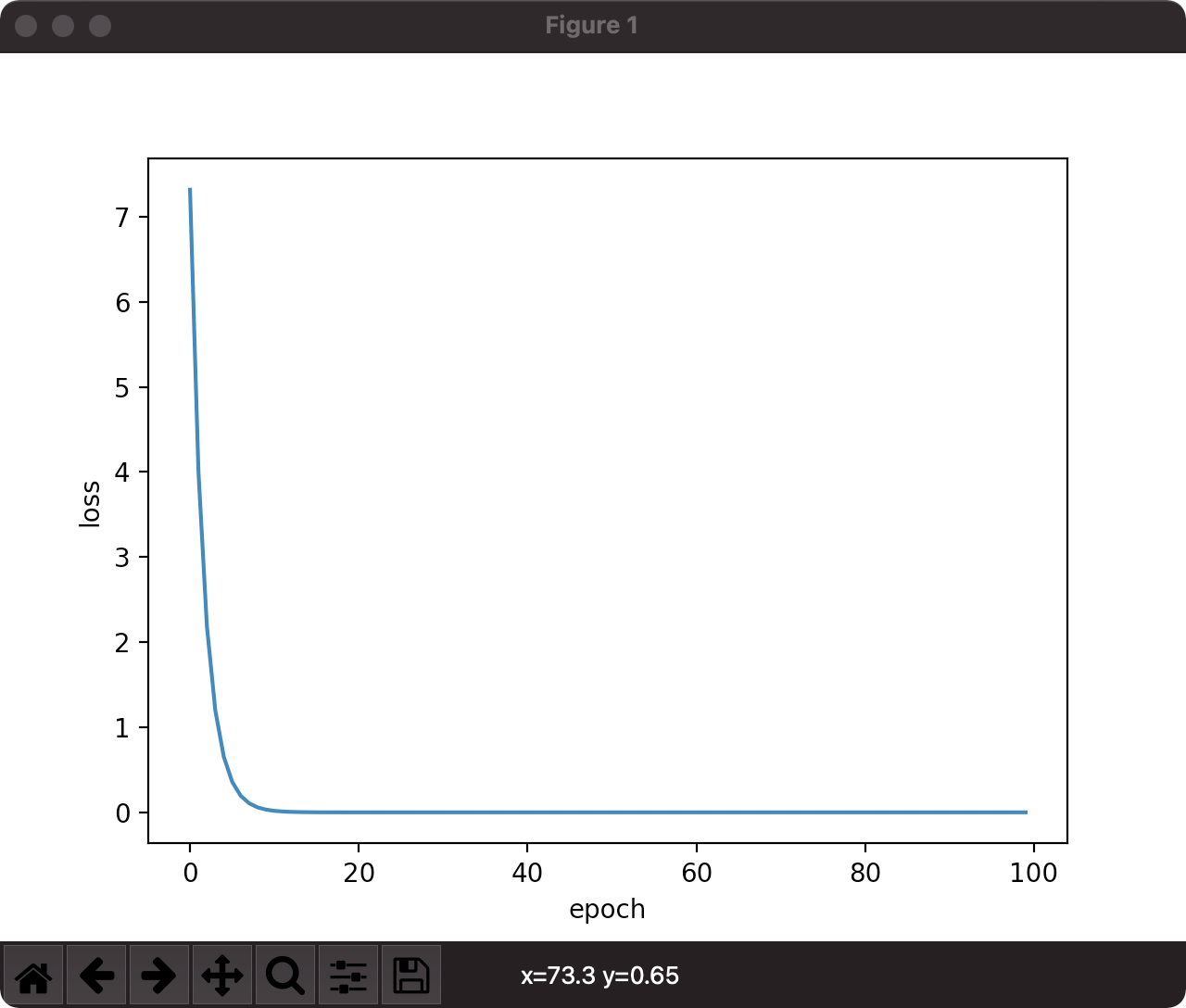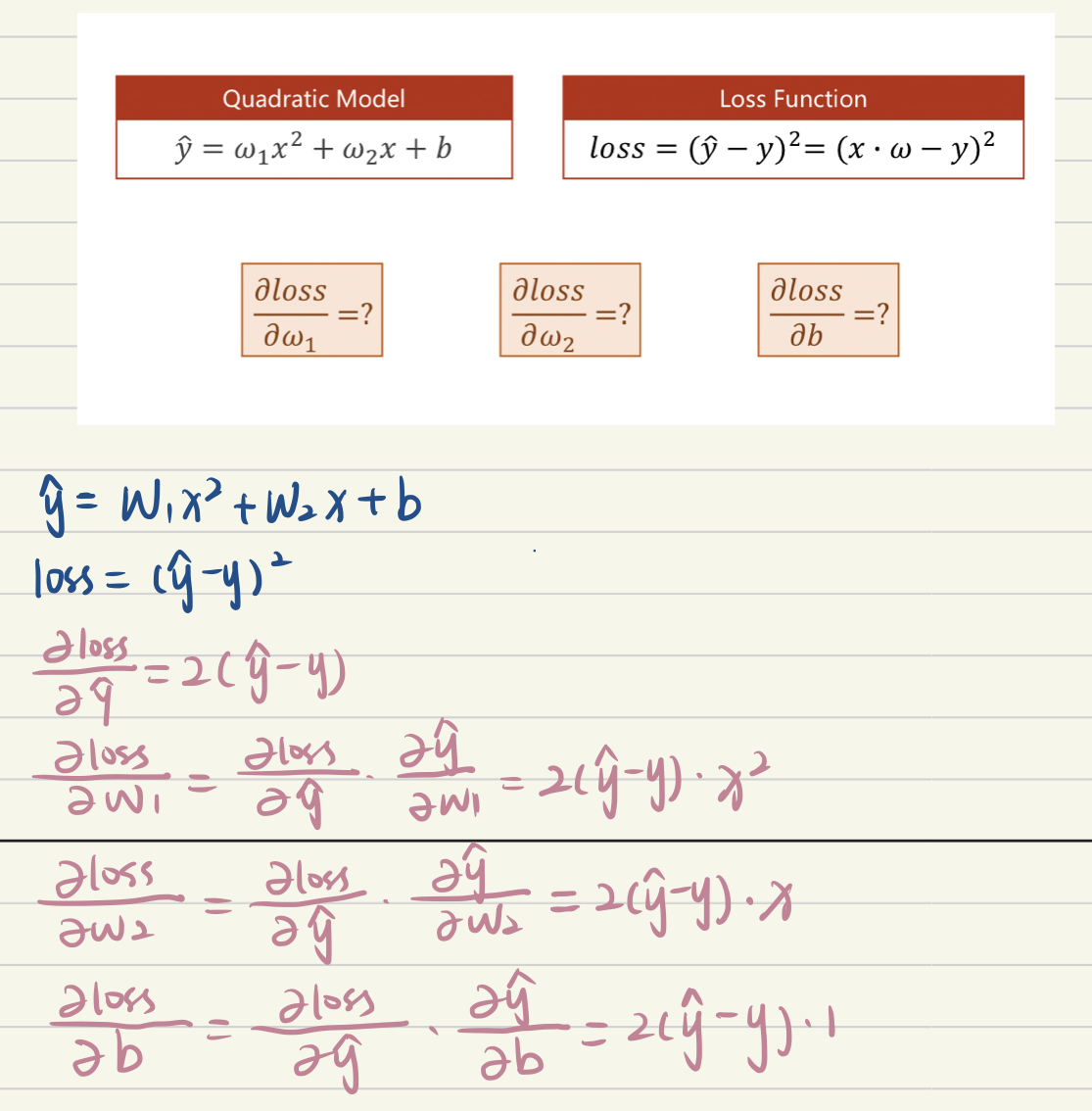1
2
3
4
5
6
7
8
9
10
11
12
13
14
15
16
17
18
19
20
21
22
23
24
25
26
27
28
29
30
31
32
33
34
35
36
37
38
39
40
41
42
43
44
45
46
47
48
49
50
51
52
| import numpy as np
import matplotlib.pyplot as plt
import torch
x_data = [1.0, 2.0, 3.0]
y_data = [2.0, 4.0, 6.0]
w1 = torch.Tensor([1.0])
w1.requires_grad = True
w2 = torch.Tensor([1.0])
w2.requires_grad = True
b = torch.Tensor([1.0])
b.requires_grad = True
def forward(x):
return w1*x**2 + w2*x+b
def loss(x, y):
y_pred = forward(x)
return (y_pred - y) **2
epoch_list = []
loss_list = []
print('Predict (before training):', 4, forward(4))
for epoch in range(100):
for x,y in zip(x_data, y_data):
l = loss(x, y)
l.backward()
print("\tgradient: ", x, y, w1.grad.item(), w2.grad.item(), b.grad.item())
w1.data -= 0.01 * w1.grad.data
w2.data -= 0.01 * w2.grad.data
b.data -= 0.01 * b.grad.data
w1.grad.data.zero_()
w2.grad.data.zero_()
b.grad.data.zero_()
print('Epoch: ', epoch, l.item())
epoch_list.append(epoch)
loss_list.append(l.item())
print("Predoct (after training):", 4, forward(4).item())
plt.plot(epoch_list, loss_list)
plt.ylabel("loss")
plt.xlabel("epoch")
plt.show()
|



